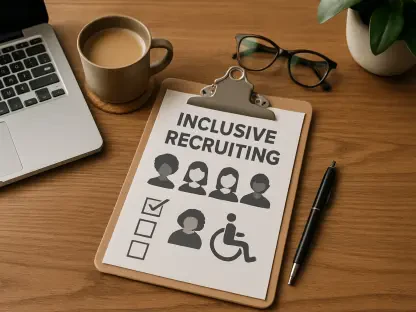What does a staggering $43.25 million settlement reveal about the hidden cracks in corporate giants like Disney, and how does it reflect the growing demand for workplace fairness? In a world where equality is no longer just an ideal but a necessity, a Los Angeles state judge’s approval of a landmark class-action settlement on September 16, 2025, has captured widespread attention. This payout to thousands of female employees isn’t merely a financial transaction; it’s a piercing signal that even the most iconic companies must face the consequences when it comes to gender pay disparities. The story behind this historic resolution unfolds as a testament to the ongoing fight for equality in the entertainment industry and beyond.
A Wake-Up Call for Corporate America
The significance of this settlement stretches far beyond the courtroom walls of Los Angeles. At its core, it addresses a deeply rooted issue: the persistent gender pay gap that has long plagued workplaces across industries. Disney, a name synonymous with magic and imagination, found itself under scrutiny for allegedly violating the California Equal Pay Act. The lawsuit claimed that female employees were paid less, denied promotions, and burdened with extra unpaid tasks compared to their male counterparts. This case isn’t just about one company; it’s a mirror reflecting systemic challenges that demand urgent attention from every corner of corporate America.
This moment marks a pivotal shift in how large organizations are held accountable. With public awareness and legal pressures mounting, settlements like this one serve as a loud reminder that ignoring pay equity can cost millions—both in dollars and reputation. The resolution at Disney underscores a broader narrative: fairness isn’t optional anymore. It’s a benchmark for progress, pushing other industry leaders to reevaluate their own practices before facing similar reckonings.
The Numbers and Promises Behind the Payout
Diving into the details, the $43.25 million settlement is a multifaceted response to years of alleged inequity. Financially, it compensates thousands of female workers who, according to claims, earned tens of thousands of dollars less than male colleagues in comparable roles. This stark wage gap isn’t just a statistic; it represents lost opportunities, diminished savings, and eroded trust for countless individuals who powered one of the world’s biggest entertainment empires.
Beyond the monetary relief, Disney has committed to structural changes that aim to prevent future disparities. Part of the agreement includes hiring an external labor economist to conduct a thorough pay equity analysis across specific positions over the next three years, from 2025 to 2028. This step targets underlying issues like job classification mismatches and inconsistent benchmarking, setting a potential standard for how corporations can address systemic bias. While the payout heals past wounds, these reforms signal a proactive stance toward lasting change.
The ripple effects of this settlement could reshape industry norms. As other companies watch Disney navigate this high-profile case, the combination of financial restitution and policy overhaul might inspire—or force—similar actions elsewhere. It’s a blueprint for accountability, proving that legal challenges can drive meaningful reform when paired with tangible commitments.
Voices of Victory and Industry Realities
Though Disney has remained silent on the specifics of the settlement, asserting that its employment policies remain lawful, the plaintiffs’ legal team has not held back their enthusiasm. They described the agreement as a groundbreaking win, particularly praising the inclusion of an external pay equity review as a “forward-thinking” measure. Their perspective highlights a crucial point: true progress requires not just compensation but mechanisms to ensure history doesn’t repeat itself.
Zooming out to the wider corporate landscape, the picture is less optimistic. A recent report from Aon plc revealed that only 25% of North American companies feel prepared for pay transparency laws, while a staggering 75% are scrambling to catch up. Another study by Mercer, released earlier this year, found that fewer than 1 in 5 U.S. firms have a defined strategy to tackle pay equity. These numbers paint a troubling reality—Disney’s case is not an outlier but a symptom of a much larger gap between legal expectations and corporate readiness.
This disconnect amplifies the importance of the settlement as a catalyst for change. It’s not just about one entertainment giant; it’s about an industry—and a workforce—grappling with how to turn rhetoric into action. As more states enforce transparency mandates, companies lagging behind may find themselves in the same legal crosshairs, making this a critical moment for reflection and reform across the board.
Lessons for Employers and Employees Alike
For businesses, the Disney settlement offers a clear roadmap to avoid similar pitfalls. Conducting internal pay audits before issues escalate into lawsuits is a practical first step—transparency can save millions in legal fees and public backlash. Additionally, bringing in independent experts to evaluate wage structures, as Disney has agreed to do, can uncover hidden biases and establish fair standards. These proactive measures aren’t just about compliance; they’re about building trust with employees and safeguarding a company’s legacy.
Employees, too, can draw actionable insights from this case. Familiarizing oneself with state-specific protections, such as the California Equal Pay Act, empowers workers to recognize and challenge disparities. Joining collective actions or advocating for open discussions about compensation within workplaces can also drive change from the ground up. Knowledge of rights isn’t just power—it’s a tool to ensure fairness becomes a lived reality rather than a distant promise.
Both sides stand to gain from fostering candid conversations about pay equity. Creating a culture where salary disparities are addressed openly can prevent grievances from boiling over into costly legal battles. The Disney case serves as a reminder that collaboration, paired with accountability, is the most sustainable path toward closing the gender pay gap for good.
Reflecting on a Milestone Moment
Looking back, the $43.25 million settlement with Disney stood as a defining chapter in the fight for workplace fairness. It brought justice to thousands of female employees who faced unequal treatment, while also setting a precedent for corporate responsibility. The dual approach of financial compensation and forward-looking reforms marked a balanced effort to right past wrongs and prevent future ones.
As the dust settled, the focus shifted to what came next. Companies across industries were prompted to take stock of their own pay practices, ideally preempting legal challenges with voluntary audits and transparent policies. For workers, the outcome reinforced the power of collective action and the importance of knowing one’s rights. Moving forward, the hope was that this case would ignite a broader movement, pushing for systemic change where equity wasn’t just a goal but a standard upheld by every organization, no matter how iconic.









